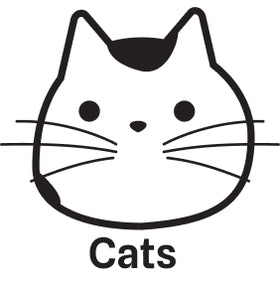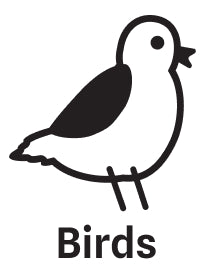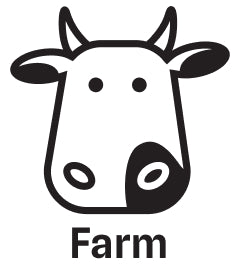
What do cats naturally eat?
The Natural Diet of the Cat
For many years, cats roamed the ancient world adopting habitats in every sort of terrain and climate, such as the plains of India, the Savannas of Africa, as well as the forests of both Eurasia and America.

So what do cats naturally eat? Because cats are obligate carnivores, they mainly eat small herbivorous mammals, such as rabbits, mice, fish, rats as well as other prey animals.
Cats can eat the entire fish, wild rabbits, birds (including muscle tissue, internal organs, bones and feathers). And this is what differs them from dogs, who are scavenging carnivores. In other words, cats can’t thrive on a vegetarian diet, as they need to constantly eat meat to survive.
By eating the whole prey, cats gain the so needed complete nutrition. This is because the animals they eat have all the necessary protein building blocks and fatty acids. In addition, cats need a significant amount of protein, because they use it whenever they are low on energy. Thus, high-protein cat food is the norm for most cats.
Therefore, if you only feed your cat raw meat, you will be doing more harm to your cat than a well-balanced dry food. In addition, as you may have noticed, wild cats do not have plant-based foods such as vegetables and fruits in their diet, except for grains, which cats eat along with the stomach of rodents. And they are already in a ready-to-use state. Besides, there is still no proof that grains have any nutritional value for a cat.
How Cats Choose Their Prey
In general, the size of the cat's prey may vary, and at times can be even bigger than the cat itself. However, according to the research, the cat's success rate in hunting drops significantly with increasing prey size.
This can be explained by three main factors:
- It’s a lot more difficult to ambush the prey and grab it;
- Larger animals tend to be smarter and are harder to trick;
- Cats are more cautious when hunting big-game prey.
In addition, a cat's diet can depend on various factors, including:
- Prey availability. If the region is rich in rabbits, as in Australia and New Zealand, the cat's diet will mostly consist of rabbits. In Europe and North America, cats eat mostly mice and rats. In addition, cats love hunting squirrels most often in the United States, as gray North American squirrels are more attractive to cats than the red European ones.
- Seasonal changes. For example, it is much easier to hunt baby rabbits in spring. And because rodents hibernate in winter, cats prefer to hunt birds, because they are vulnerable and easier to catch during cold seasons.
- Individual hunting behavior. Some cats prefer a certain type of prey For example, birds. Catching birds requires a high degree of skill and in order to maintain it, the cat goes out to hunt birds as often as possible.
- The social structure. Some cats can live on their own, but they are social animals, so they prefer to live in groups. This can also affect the choice of prey.
Human Food for Cats
Remember that even though most human foods are absolutely safe for cats, it is best to use such food only as a treat to keep them healthy.
- Baby food. Such food is perfectly suitable for cats, as long as it doesn’t contain any seasonings, garlic, or onion. Cats can also eat raw meat, meat with vegetables, canned meat, etc.
- Meat. All types of lean meats are safe for your cat. These include chicken, beef, liver, and boneless fish. Some cat owners favor feeding raw or partially cooked meat, and it’s a common mistake. It is always best to cook meat if you are not sure of its origin. You should also cut meat into small pieces for the safety of your cat.
- Other products. Small amounts of cooked pasta, bread, and unsalted pretzels can be safely added to your cat's diet. Some cats may even eat dry food, but it’s best to mix it with meat to give it smells. A variety of unleavened foods may also work well for your cat, as long as it is given in small amounts. Otherwise, the diet will not be balanced.
Some human food can also be poisonous to cats, no matter how delicious it seems to you. At the very least, they can harm the cat and make him feel sick, while some foods can even kill him. These foods are primarily chocolate, alcohol, avocados, onions, and raisins. Raw dough is another thing that you should never feed your cat, as the yeast can actually destroy its intestines.
The Best Food for Your Cat

An excellent alternative to natural food for cats are super premium and holistic foods. Today, there are many balanced feed options that include the essential nutrients, vitamins and amino acids that your cat needs. You can safely feed your cat with any type of dry and wet food.
Dry food is usually a lot cheaper, while wet food contains more high-quality ingredients. However, both of them are 100% nutritionally complete. Such food is suitable for cats of any age, and it takes into account the needs of the cat’s body depending on the age.
Pets that are fed with specially formulated food develop and feel much better than those who are only fed with human food. Due to the absence of digestive problems, these cats are more active and do not require additional feeding or vitamin complexes.







Leave a comment